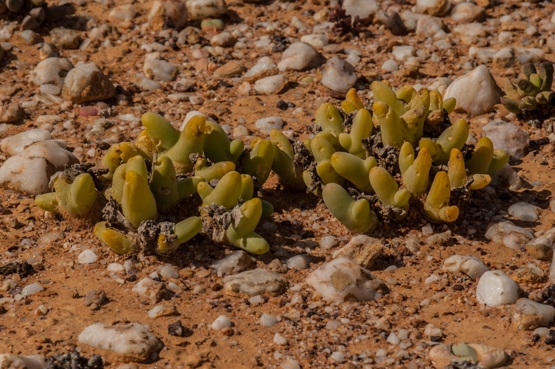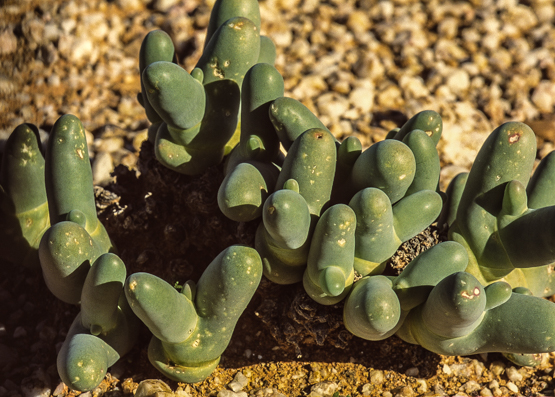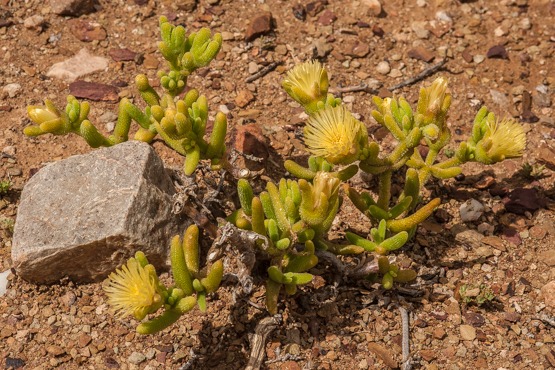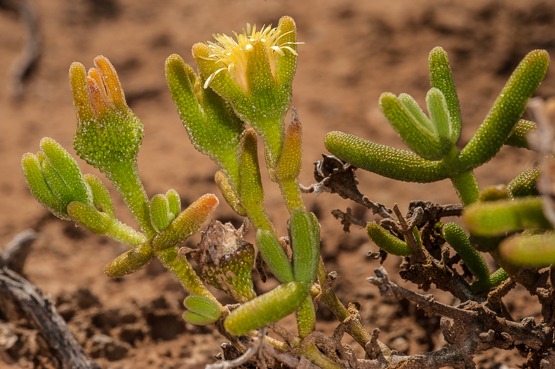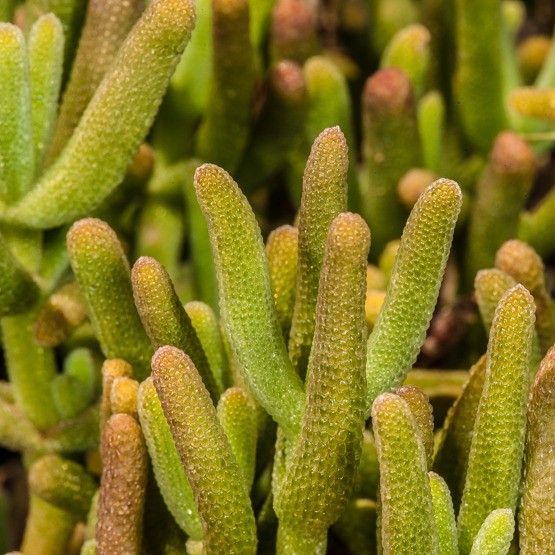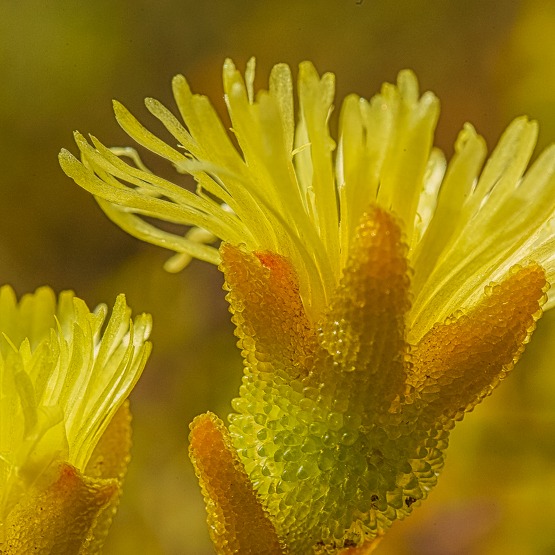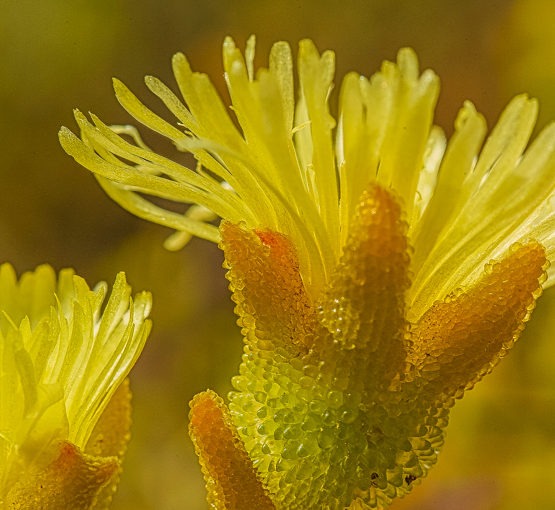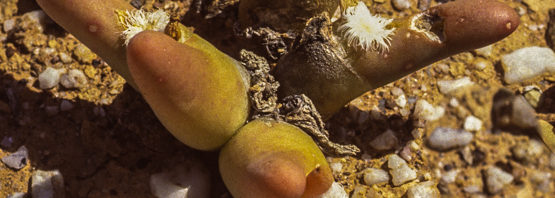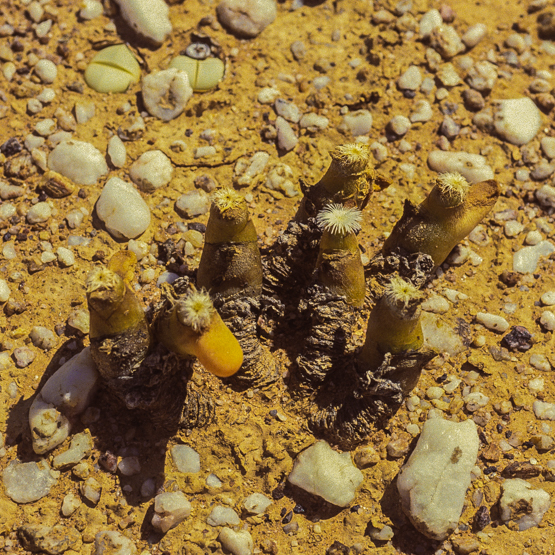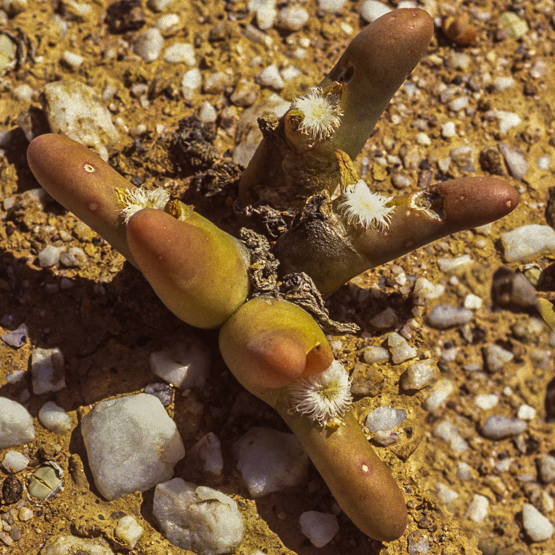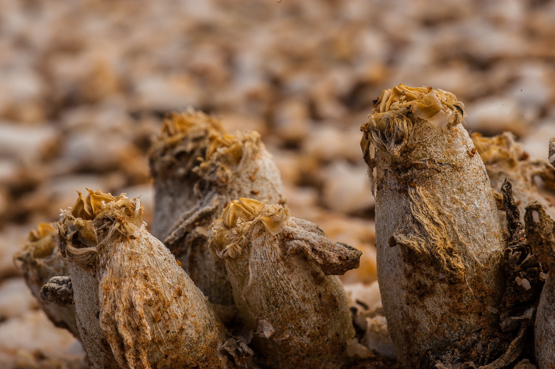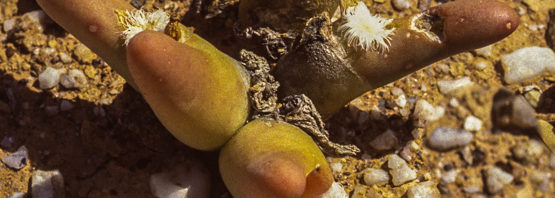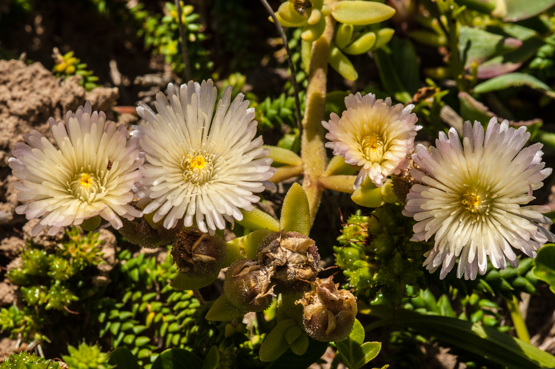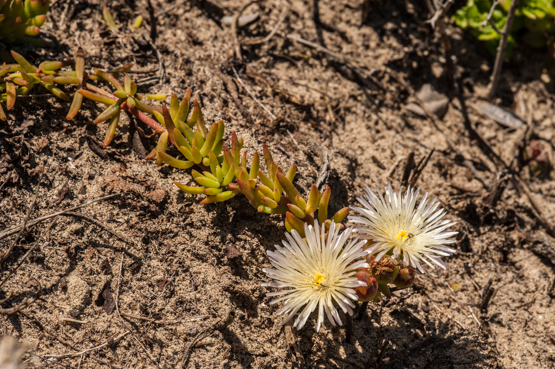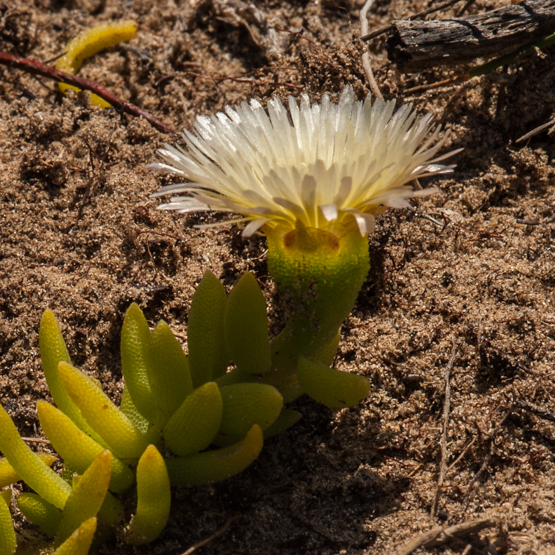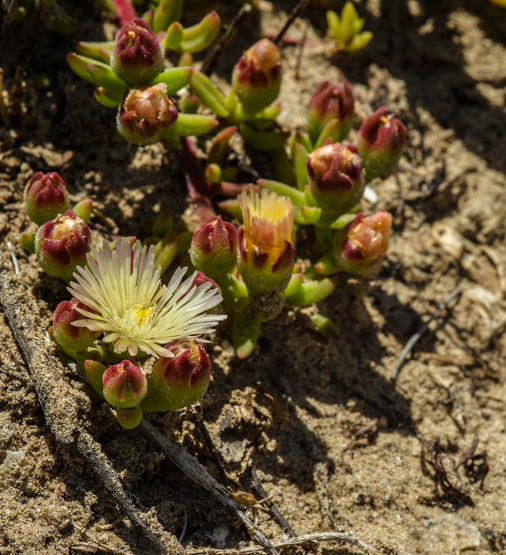In my preceding post (https://enjoysucculents.wordpress.com/2015/11/01/conophytum-khamiesbergense/) I asked the readers’ opinion on the slide scans used there.
A big thank you to all who were kind enough to respond to that request (and I’m quite chuffed because all responses were positive). Being able to mix pictures that were taken digitally with ones that were scanned, gives me a lot more options for posts.
Today’s subject with its bizarre finger-and-thumb-like leaves is certainly one of the more peculiar succulents. One cannot help but feeling that some of this otherness is reflected in its taxonomic history:
The taxon* was described in 1789 as a Mesembryanthemum, in 1925 it was placed in a genus of its own (Dactylopsis) and in 1995 it was incorporated in Phyllobolus (only to be returned to Dactylopsis in 2006). In 2013 it was reinstated -together with many other species- as a member of Mesembryanthemum.
* Taxon is a term to refer to a taxonomic group or unit of any rank (a family, a variety or whatever -depending on the context).
The plants form clumps 10-20 cm tall and are heteromorphous (of variable shape): the first leaf of a growing period is long and the second short, giving the appearance of a “finger and thumb”.
They flower at the beginning of the resting period (November-December); the flowers stay open day and night for 3 weeks or even longer.
To see the plants in the wild, you have to go to the Vredendal/Vanrhynsdorp area of the Knersvlakte in Namaqualand, where they occur on shale covered with quartz pebbles.

